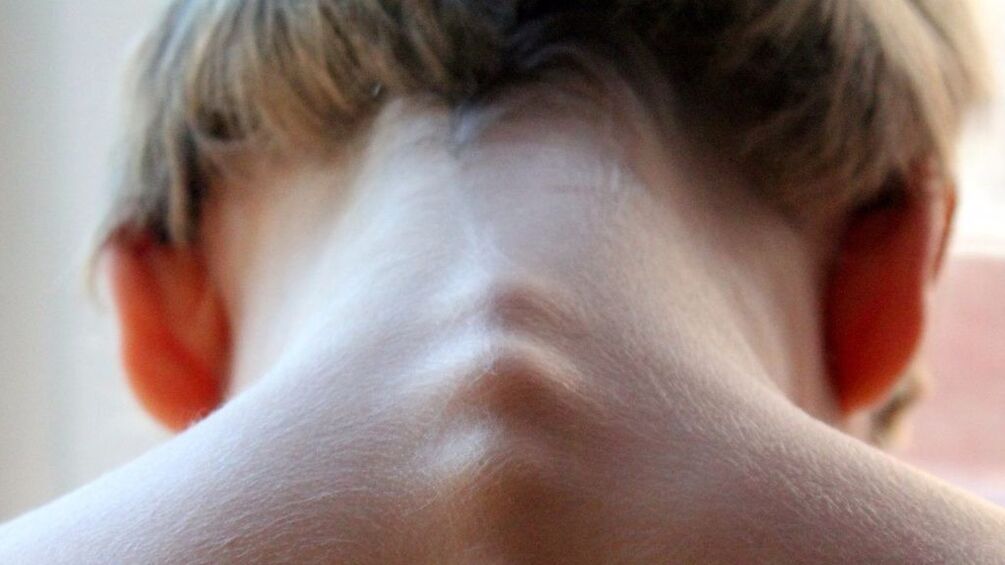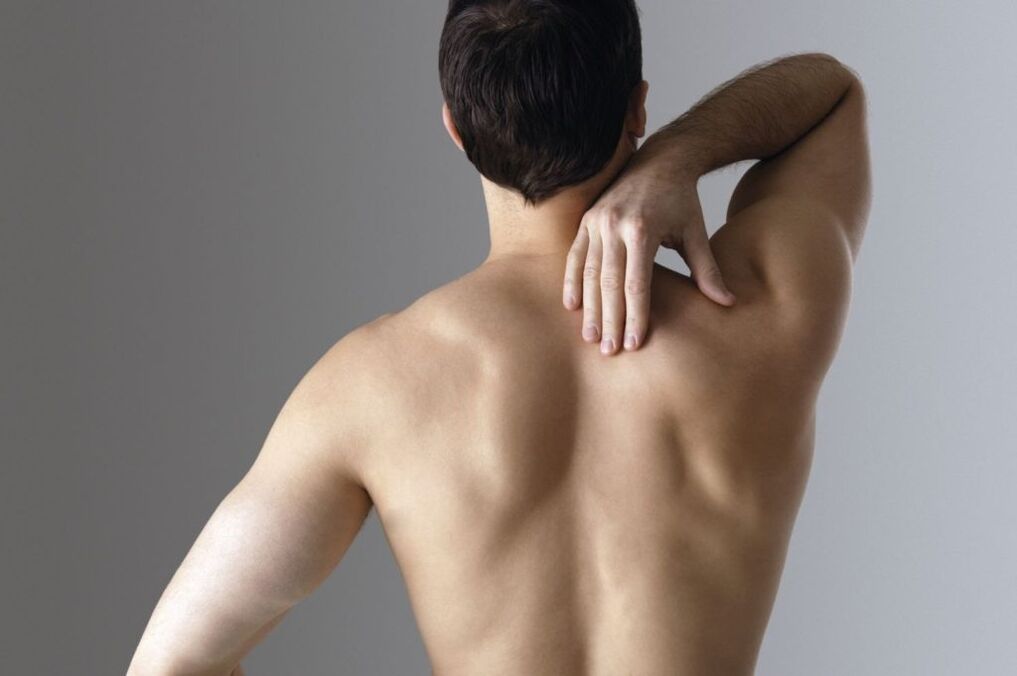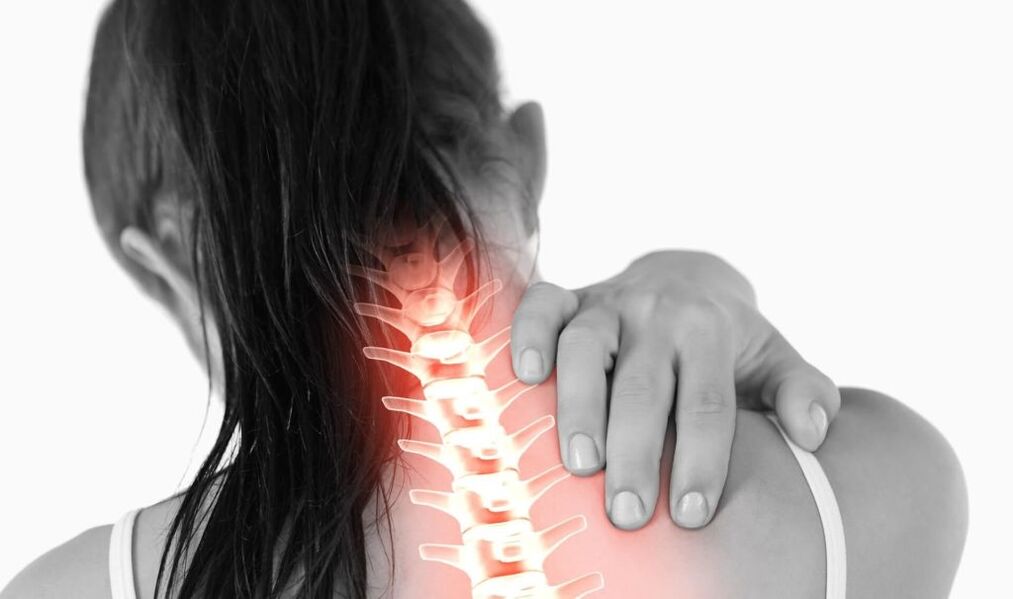Cervical osteochondrosis is a disease characterized by degenerative distrus changes in the tissue of intervertebral discs, which lead to a decrease in their height, damage to the joints between the vertebrae, squeezing the blood vessels and the roots of the nerves.

Previously, the pathology was considered a disease of people over the age of 40, but today osteochondosis has significantly younger and is often diagnosed with schoolchildren and students for the first time. The disease leads to a series of complications. First of all, the blood flow to the brain worsens. The treatment of cervical osteochondosis is a long -term process and includes both drug therapy and not united.
The causes of the development of the disease
The reasons for the development of cervical osteochondrosis are different. First of all, the disease appears due to the hypodynamia of the lifestyle, sitting, overweight. At the same time, the main cause of the osteocondrosis of the cervical region is a violation of blood circulation in this area. As a result, the nutrition of the tissues of the intervertebral discs worsens, which involves a change in their structure. There are several factors that contribute to the development of this disease:
- Hypodynamia;
- weak muscle corset;
- Excess weight;
- neck injuries;
- stress;
- hypothermia;
- Systemic diseases of the connective tissue (red lupus, rheumatoid arthritis).

Hypodynamia is one of the most important factors in the development of diseases of the spinal column. Due to the lack of physical activity, people who spend a lot of time in a sitting position are facing osteochondosis. Much also depends on the posture and muscles of the back. The improper position of the neck during long -term work at the table leads to a violation of the food of the intervertebral discs, which over time is poured into the degeneration of cartilage and in the development of osteochondosis. For this reason, the disease is often diagnosed with students and students, since their daily activity is associated with many hours of session at the table or desk. In addition, osteocondrosis is often diagnosed with employees and all people who spend a lot of time on the computer.
As a rule, the development of the osteocondrosis takes place under the influence of several provocative factors simultaneously. Many doctors consider osteochondrosis not an independent disease, but for a natural consequence of the wrong lifestyle. Constant fatigue, stress, position of the incorrect body during sleep or working on a computer, excess weight and bad habits: all this damages the health of the spine. As you know, a strong back is the key to good health and longevity. Despite the fact that osteochondrosis does not threaten life, this violation is able to significantly worsen general well -being and cause the development of other diseases, therefore it is important to detect the disease in a timely manner and undergo complex treatments.
Symptoms of the disease and degree of osteochondosis

Pain syndrome occurs against the background of the progression of the disease. The growth of the symptoms of cervical osteochondrosis in women and men is a long process. From the moment the changes in the tissues of the intervertebral discs, before the first signs of cervical osteochondrosis, can take more than a year to the appearance of the intervertebral discs. There is no difference in the symptoms of cervical osteocondrosis in men, women and children. The only difference: at a young age, the symptoms are not clearly expressed as in the elderly. They are lubricated symptoms that are due to difficulties in the treatment of cervical osteochondrosis. A person does not see a doctor until the symptoms of the disease that bring discomfort. This happens at least 5 years after the start of the degeneration of the cardboard of the intervertebral discs. In the first years of development, the osteochondosis of the cervical column is practically not accompanied by clinical events. Perhaps only a slight feeling of numbness of the upper back after sleep or short -term muscle cramps in the moments of psycho -emotional overvoltage. In order to understand the signs of cervical osteochondrosis in men and women, the degree of this disease that characterize the severity of the pathological process in intervertebral discs should be considered.
The first degree (preclinical) of disease: symptoms and characteristics
With cervical osteochondrosis, symptoms and treatment depend on the stage of the pathological process. The first degree is called preclinical, since it has no characteristic clinical symptoms. It is possible to recognize osteochondrosis at this stage only through hardware diagnostics: changes in the discs are visible on an X -range (not always) and are well displayed on MRI and CT. In the first phase of the disease, there is a violation of the trophism (nutrition) of the intervertebral discs. As the disease advances, an elastic cartilage tissue is compacted. The discs become more difficult, following which the vertebrae lose mobility. Therefore, the degenerative contextive processes begin, leading to a violation of the function of the cervical column. As a rule, the symptoms already become evident in the second phase of the development of the disease, but thus expressed weakly that they rarely disturb a person. The first degree of disease proceeds in a few years.
Symptoms of osteochondrosis of the second degree

The second degree of cervical osteochondrosis is characterized by an increase in muscle tone in the damage area. As you can cure cervical osteochondrosis: it depends on the severity of the disease. If the preclinical stadium often proceeds unnoticed by the patient, the second degree of the disease acquires some symptoms that should notify the patient and show him a doctor. It is possible to completely cure cervical osteochondrosis: it depends on the severity of the pathological process. The first therapy began, the more favorable the prognosis is. In the second phase of the disease, the discs between the vertebrae are compact. The neck loses mobility, but in ordinary life this practically does not interfere with the patient. A characteristic symptom is an increase in the muscle tone of the affected area. With prolonged physical effort, acute head movements can be observed, after a long sleep, numbness and muscle hypertension. Sudden movements lead to acute pain. This is due to the fact that the spasmodic muscles compress the nerve, causing severe pain. The pain can be given to the scapula, in the neck, less often - in the lower limbs. This variability of pain syndrome is due to a large number of nerves located in the cervical region.
The first signs of cervical osteochondrosis are the following symptoms:
- fatigue;
- heachache;
- dizziness after sleep;
- pain in the cervical region with sudden movements;
- Local numbness of the skin of the cervical region.
As a rule, in the second phase of the disease, the symptoms appear only from time to time. This is used to a serious overwork or intensive physical effort. Most patients do not pay attention to an easy malaise, expecting the discomfort itself. In general, this is how it happens, symptoms rarely disturb a person more than a few hours and pass without taking special drugs.
Characteristics of the osteochondrosis of third degree

The symptoms of the osteochdrosis of the cervical column of the third degree are pronounced. If only changes begin in the first phase of the disease, the second degree is characterized by a compaction of discs of the discs, therefore to the third degree of osteochondrosis there are cracks and microwaves of the fibrous ring of the disc. Perhaps the formation of a hernia - the loss of a multipotic nucleus in the intervertebral space. This is accompanied by a violation of brain circulation, since the flattened discs strongly compress the spinal artery. A typical symptom is a severe headache, often dizziness, trembling steps in front of the eyes. With third degree osteochondrosis, a feeling of heaviness in the neck is constantly present. The muscles are almost always spasmodic, a person feels heaviness and painful pain. Stay in the long term in a position, the tension of the neck muscles or sleep on a uncomfortable pillow leads to local leather numbness or a strong attachment of pain. You can feel changes with palpation: the neck muscles become solid to the touch, the pressure causes severe pain. A sign of cervical osteochondrosis in men is severe pain in loads (women less often loads this spine in everyday life).
Characteristics of the fourth degree
The suffocated nerve interrupts blood circulation and causes severe neck pain. The fourth stage of the disease is the most difficult. At the same time, irreversible changes occur in the structure of the records. The pathological process spreads from the fibrous ring to the vertebrae. The signs of osteochondrosis of the cervical column in this case are described by different syndromes: these are rooser, reflection, spinal syndrome. A severe pain is observed along the suffocated nerve, disorders in brain circulation. At this stage, the symptoms of cervical osteochondrosis are different. Micora frequent (muscles), neuralgia, migraines. The pain extends to the chest, the patient can encounter discomfort in the heart, which is associated with intercostal neuralgia against the background of the osteochondrosis on the left.
How to take care of osteochondrosis?
This disease of the spine requires a doctor's intervention

How to better face cervical osteochondrosis: only a doctor can answer this question. There is no universal treatment for cervical osteochondrosis, it all depends on the characteristics of the course of the disease in a particular patient. Patients are often interested in which of the doctors treats cervical osteochondosis. Generally, the initial diagnosis is made by the therapist or the neurologist, to whom patients complained about pain in the cervical region. To make a diagnosis, it is necessary to create a X -ray in three projections and magnetic resonance imaging, check the presence of a symptom of blacks. The method for the treatment of cervical osteocondrosis will depend on the results of the examination, the therapy is selected by the neurologist. The way in which exactly the cervical osteochondosis is it depends on the stage of the development of degenerative distance changes in the discs. In the initial phase of the disease, a special physical education will both help to get rid of the symptoms of osteocondrosis in the cervical region and prevent the further spread of the pathological process.
The methods of treatment for osteochondrosis are different. Complex therapy includes:
- pharmacological treatment;
- Operating therapy;
- physiotherapy procedures;
- Manual therapy.
The symptoms and treatment of osteochondrosis depend on the severity of pathological changes in the cervical column. The treatment of the osteochondrosis of the neck should be prescribed by a doctor, the car -mediation will not bring a result and could be dangerous.
Medicines
The first thing to do with cervical osteocondrosis is to eliminate pain and muscle spasm; This is the first aid for the patient. For this purpose, non -pound, analgesics and relaxing muscle relaxants are used. As a rule, this allows you to alleviate the discomfort in a few hours. The relief of muscle spasm in itself is an effective method of treatment, as it restores nervous conductivity and blood circulation in the cervical region. How to treat cervical osteochondosis in the future depends on the degree of development of pathological changes. Doctors often prescribe:

- B vitamins to restore nervous conduction;
- Condroprotectors to improve the nutrition of the cartilage fabric of the intervertebral discs;
- nootropic to improve brain circulation;
- Products that improve blood properties;
- Sedatives to relieve stress.
Not all groups of drugs listed are recommended to be used in different stages of the disease. The exact methods of treatment of cervical osteochondrosis will be selected by the doctor.
Operating therapy
Physical education of the media deals with osteochondrosis well in the initial phase of development. Medical physical education is the most effective treatment of cervical osteocondrosis in the initial phase. Osteocondrosis in children and adults occurs due to the weak muscles of the back, therefore this treatment is aimed not only at the elimination of symptoms, but also to eliminate the cause of the disease. The classes of therapeutic exercises take place in the special office of the clinic. The exercises are selected individually for each person and are performed under the supervision of a doctor. If the cervical osteochondrosis is treated, it depends on the speed with which a person contacted a doctor. The first degree of disease can only be treated by gymnastics. The symptoms of the osteocondrosis of the cervical vertebrae occur after different classes of these, when muscle spasm decreases.
Physiotherapy

Chronic osteochondrosis, whose symptoms can practically not disturb a person, are treated with physiotherapy. This method aims to restore the normal nutrition of the fabrics of the intervertebral discs. Usually used electrophoresis with nicotinic acid to expand blood vessels and improve blood circulation. This method of treatment relieves the symptoms of cervical osteochondrosis with root syndrome and migraine, since it reduces the compression of the nerves and improves brain circulation. The main symptoms of cervical osteochondrosis can be eliminated by magnetotherapy or from exposure to heat. Only 10-15 procedures normalize the trophic in the cervical region and eliminate the symptoms of the disease.
Forecast
If cervical osteochondosis is treated, it depends on the severity of the disease. In the initial phase, the pathological process is completely shot. The intervertebral discs are restored with the right approach, but slowly. The treatment aims to prevent the progression of the disease and restore the elasticity of the cartilage. With advanced forms of the disease, it is almost impossible to return the former neck mobility. The complete treatment of osteochondosis of the cervical column in this case allows you to get rid of symptoms and prevent the development of complications. In serious cases, the patient will have to undergo a preventive treatment twice a year.




















